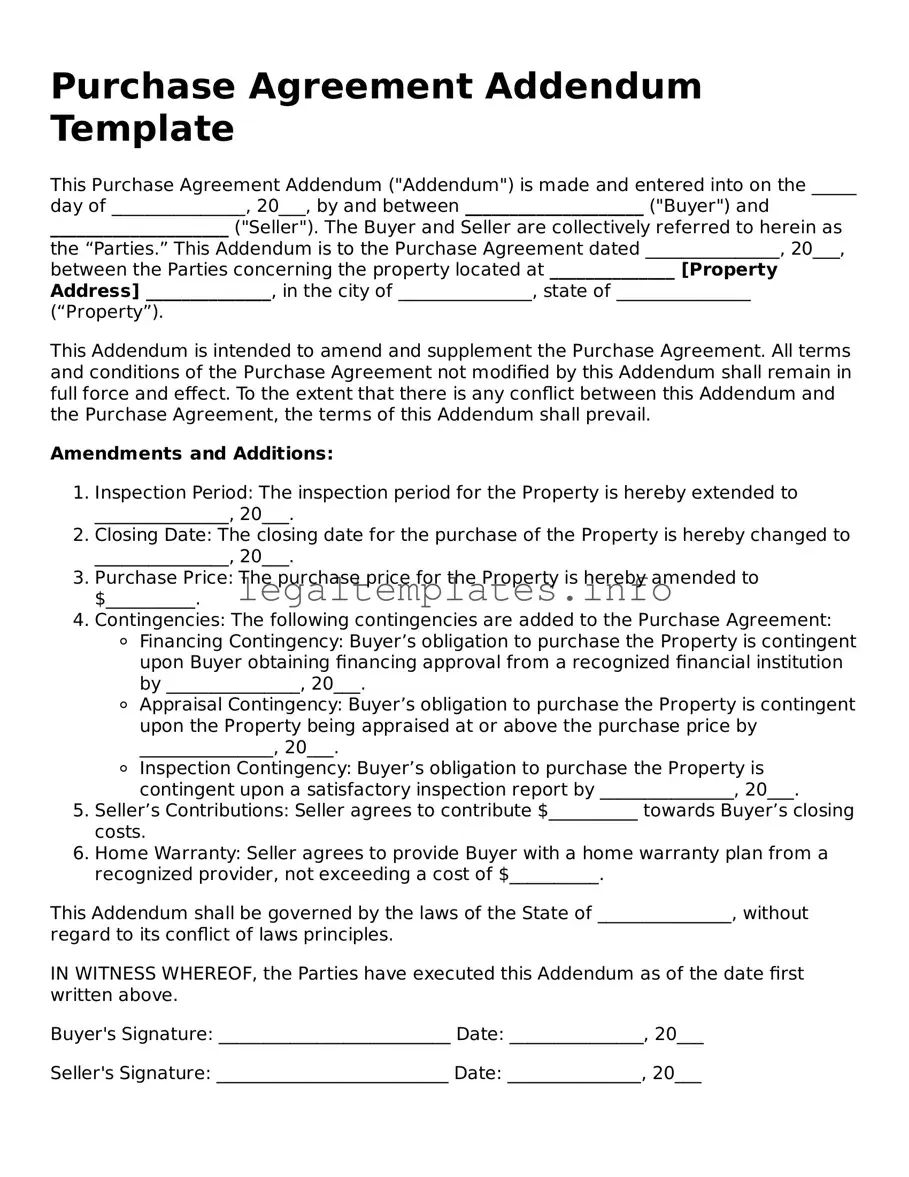An Amendment to Purchase Agreement is quite similar to the Purchase Agreement Addendum, both serving the purpose of modifying the original purchase contract. However, while an addendum introduces additional terms or conditions, an amendment is typically used to change existing terms of the agreement. This means that an amendment might adjust the sale price or closing date, whereas an addendum might add a new inspection requirement or a property inclusion not previously listed.
Next, the Counteroffer Form comes to mind. This document is used when a party wants to change the terms proposed by the original offer without accepting it. It's similar to an addendum in that it alters the scope of the agreement but differs because it's used before the initial agreement is finalized, reflecting negotiation in progress rather than adjustments to an already agreed-upon deal.
A Contingency Release Form is another document sharing similarities with a Purchase Agreement Addendum. It’s employed to remove previously agreed-upon conditions from a purchase agreement, effectively modifying the agreement. For instance, if a sale is contingent upon the buyer selling their current home, a contingency release would remove that requirement, similar to how an addendum might add or alter terms.
The Inspection Addendum is closely related, explicitly focusing on terms related to property inspections. This form is actually a type of Purchase Agreement Addendum, tailored to address conditions, repairs, or certifications discovered during the home inspection process. It customizes the purchase agreement by setting out inspection-related agreements or requirements, similar to how a more general addendum might address a broader range of conditions or terms.
Similarly, the Financing Addendum is a document that deals specifically with the details of the loan the buyer intends to use for purchasing the property. It amends the purchase agreement to include terms like the type of financing, loan amount, and deadlines for securing financing, ensuring that these critical details are part of the purchase agreement.
A Disclosure Statement is somewhat related, as it provides additional important information to the buyer that was either not included or not known at the time the original agreement was made. Though it is more informational and less about altering terms, it plays a crucial role in ensuring the buyer is fully informed, similar to the intention behind addendums.
The Home Warranty Agreement can also be connected, as it represents an agreement about the warranty coverage for various components of the property, which might be included as an addendum to the purchase agreement. This illustrates the addendum's role in adding terms to the agreement, specifically regarding the transfer of a home warranty plan to the buyer.
The Lease Agreement Addendum finds its place in situations where the property in question is being leased either before or after the sale. Like a purchase addendum, it modifies the original lease agreement by adding specific terms or conditions that were not part of the initial lease, demonstrating how addendums serve to tailor contracts to the specific needs and agreements of the parties involved.
Last but not least, the Escrow Instructions form, often part of real estate transactions, specifies the terms under which escrow should operate. While not an addendum to the purchase agreement per se, it can modify how funds, documents, and other items are held and transferred by an escrow agent, aligning closely with the purpose of an addendum in detailing specific terms outside of the main agreement.
